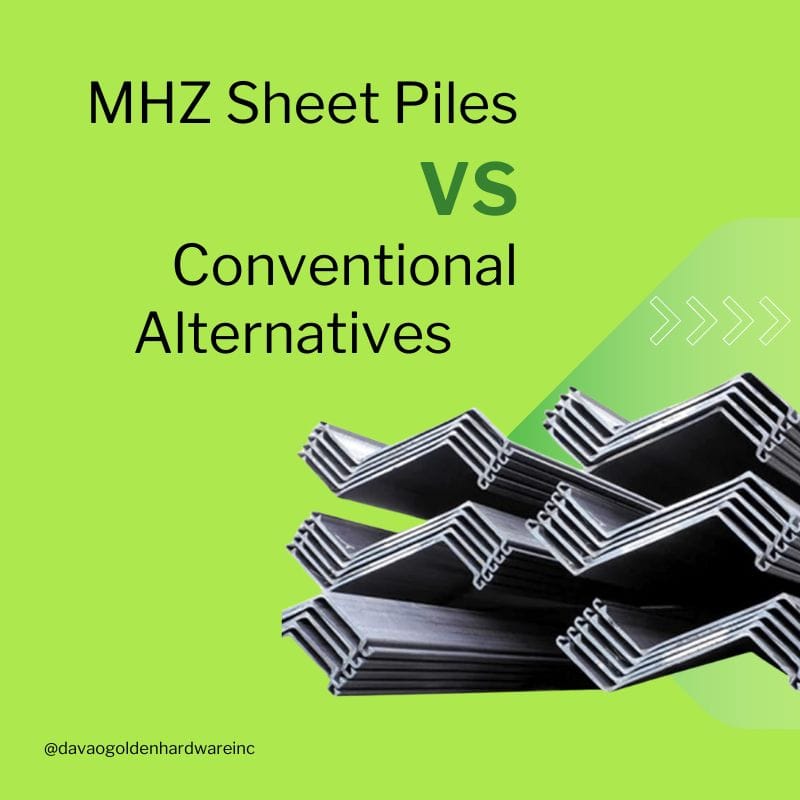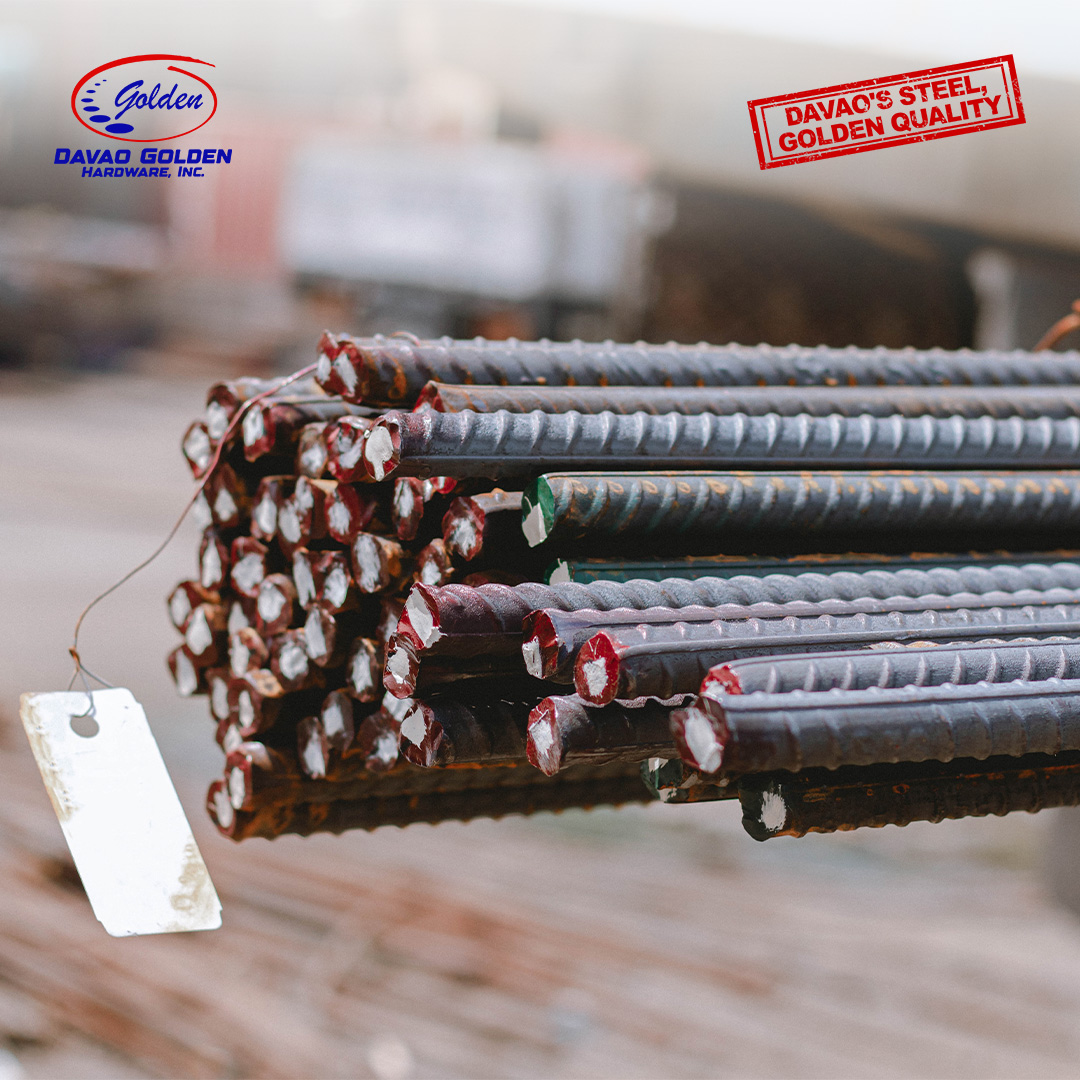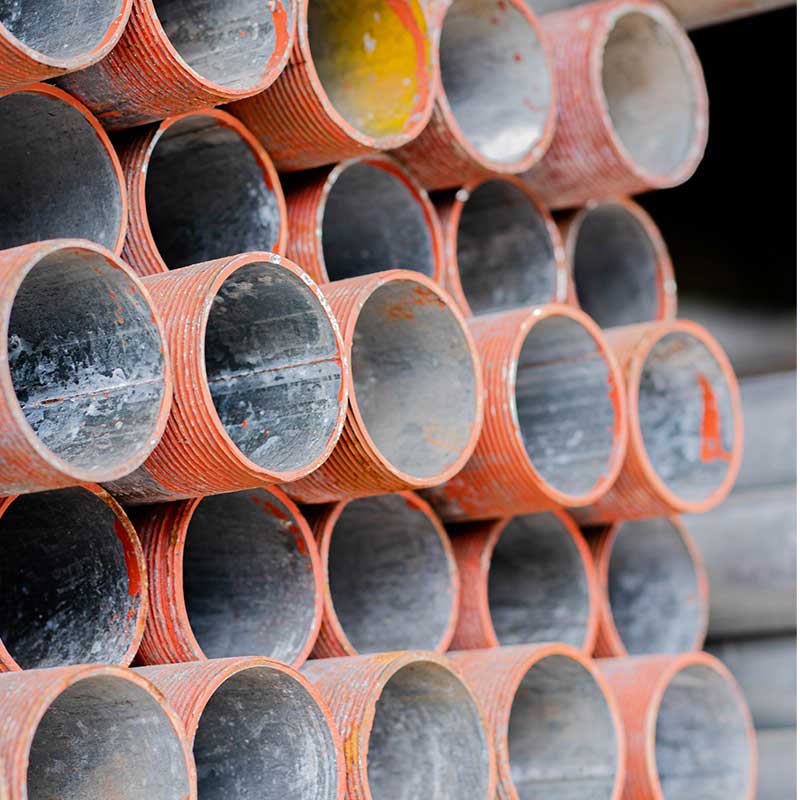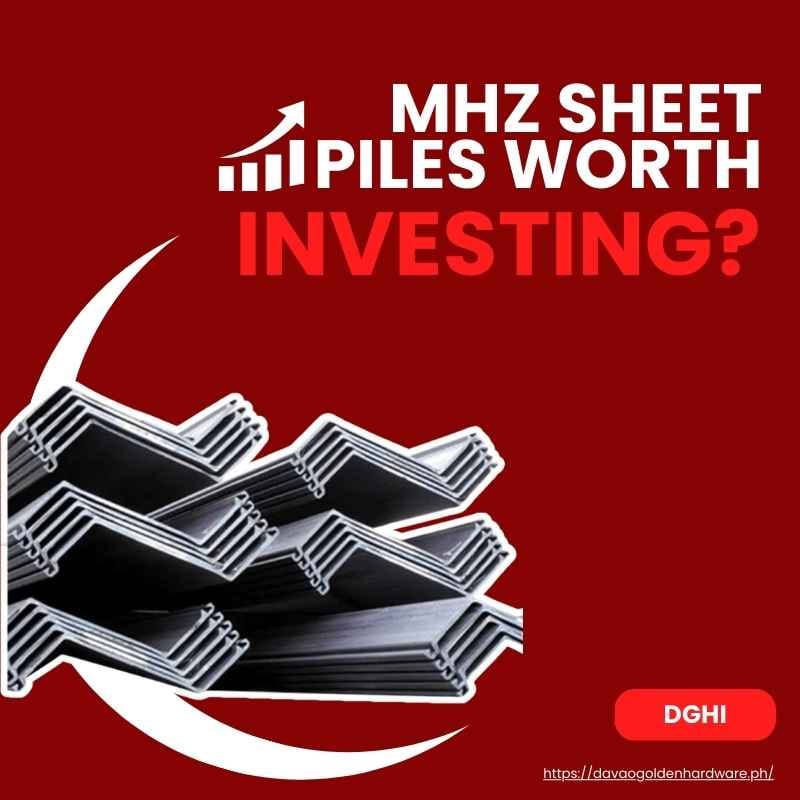
When selecting materials for construction projects involving soil retention, water barriers, or structural support, choosing the right solution is critical for both immediate success and long-term performance. This comprehensive analysis compares MHZ sheet piles versus other materials commonly used in the industry, highlighting the key differences in performance, cost-effectiveness, and practical applications. Understanding these distinctions can help you make informed decisions for your next project.
Material Comparison: MHZ Sheet Piles Versus Alternatives
According to the Department of Public Works and Highways (DPWH), construction material selection significantly impacts project timelines, costs, and long-term performance. Let’s examine how MHZ sheet piles compare to concrete walls and timber piling:
Structural Strength and Performance
- MHZ Sheet Piles: Superior section modulus (1200-3600 cm³/m) and moment of inertia (19,600-72,000 cm⁴/m) provide exceptional load-bearing capacity
- Concrete Walls: Good compressive strength but requires steel reinforcement to match tensile capabilities
- Timber Piling: Limited strength properties, prone to breakage under high loads, and vulnerable to environmental degradation
Installation Efficiency
- MHZ Sheet Piles: 40-60% faster installation with specialized driving equipment and efficient interlocking systems
- Concrete Walls: Time-intensive construction requiring extensive formwork, rebar placement, concrete pouring, and curing periods
- Timber Piling: Moderate installation speed but less suitable for deep or challenging soil conditions
Durability and Maintenance Requirements
The Philippine Constructors Association emphasizes the importance of long-term material performance:
Service Life Comparison
- MHZ Sheet Piles: 50+ years typical service life with proper specification and installation
- Concrete Walls: 25-40 years before significant deterioration in standard conditions
- Timber Piling: 10-15 years average lifespan, particularly limited in marine or humid environments
Maintenance Needs
- MHZ Sheet Piles: Minimal maintenance requirements, typically limited to periodic inspections
- Concrete Walls: Regular maintenance including crack sealing, spalling repair, and waterproofing renewal
- Timber Piling: Frequent maintenance including chemical treatments, moisture protection, and structural reinforcement
Environmental Performance and Adaptability
When comparing MHZ sheet piles versus other materials for environmental impact:
Weather and Climate Resilience
- MHZ Sheet Piles: Excellent performance in extreme conditions including floods, storms, and temperature variations
- Concrete Walls: Susceptible to cracking from freeze-thaw cycles and potential failure during seismic events
- Timber Piling: Highly vulnerable to weather effects, including warping, splitting, and accelerated decay
Soil and Water Interaction
- MHZ Sheet Piles: Superior water barrier properties with minimal seepage through interlocks
- Concrete Walls: Potential for water penetration through cracks and joints, requiring additional waterproofing
- Timber Piling: Poor water barrier capabilities with significant gaps between piles
Cost Analysis and Return on Investment
According to the Construction Industry Authority of the Philippines (CIAP), total lifecycle cost analysis reveals significant differences:
Initial Investment Comparison
- MHZ Sheet Piles: Higher initial material costs offset by installation savings
- Concrete Walls: Moderate material costs but higher labor and equipment expenses
- Timber Piling: Lowest initial costs but extremely limited service life
Lifetime Value Analysis
- MHZ Sheet Piles: Lowest total ownership cost due to minimal maintenance and extended service life
- Concrete Walls: Moderate to high lifetime costs including regular repairs and potential replacement
- Timber Piling: Highest lifetime costs due to frequent maintenance and multiple replacement cycles
Key Application Advantages
The performance advantages of MHZ sheet piles versus other materials are particularly evident in specific applications:
Deep Excavation Support
- MHZ Sheet Piles: Ideal for deep excavations with excellent lateral support and minimal footprint
- Concrete Walls: Requires extensive space for construction, limiting applicability in tight urban settings
- Timber Piling: Unsuitable for significant depths due to strength limitations
Waterfront Structures
- MHZ Sheet Piles: Superior performance in marine environments with excellent corrosion resistance
- Concrete Walls: Vulnerable to saltwater deterioration without extensive protection
- Timber Piling: Rapid deterioration in marine settings despite chemical treatments
Permanent Retaining Walls
- MHZ Sheet Piles: Excellent long-term stability with minimal deflection
- Concrete Walls: Good performance but potential for cracking and water intrusion
- Timber Piling: Not recommended for permanent applications due to limited lifespan
Implementation Considerations
For optimal results when selecting MHZ sheet piles versus other materials:
Project-Specific Analysis
- Evaluate specific project requirements including loads, soil conditions, and service life expectations
- Consider space constraints and installation timelines
- Assess groundwater conditions and environmental factors
- Analyze total lifecycle costs rather than just initial investment
Professional Guidance
- Consult with specialized engineers familiar with various retention systems
- Request material-specific specifications and performance data
- Consider previous project case studies demonstrating real-world performance
- Evaluate supplier support capabilities including technical assistance
Conclusion
When comparing MHZ sheet piles versus other materials like concrete and timber, the analysis demonstrates clear advantages in structural performance, installation efficiency, durability, and long-term value. While the initial investment may be higher than some alternatives, the superior lifecycle performance delivers substantial cost savings and reliability benefits over the project’s lifespan.
For projects where structural integrity, longevity, and lifecycle economy are priorities, MHZ sheet piles represent the optimal choice among available materials. Their combination of strength, efficiency, and durability makes them particularly well-suited for challenging applications where conventional alternatives would struggle to deliver comparable performance.




